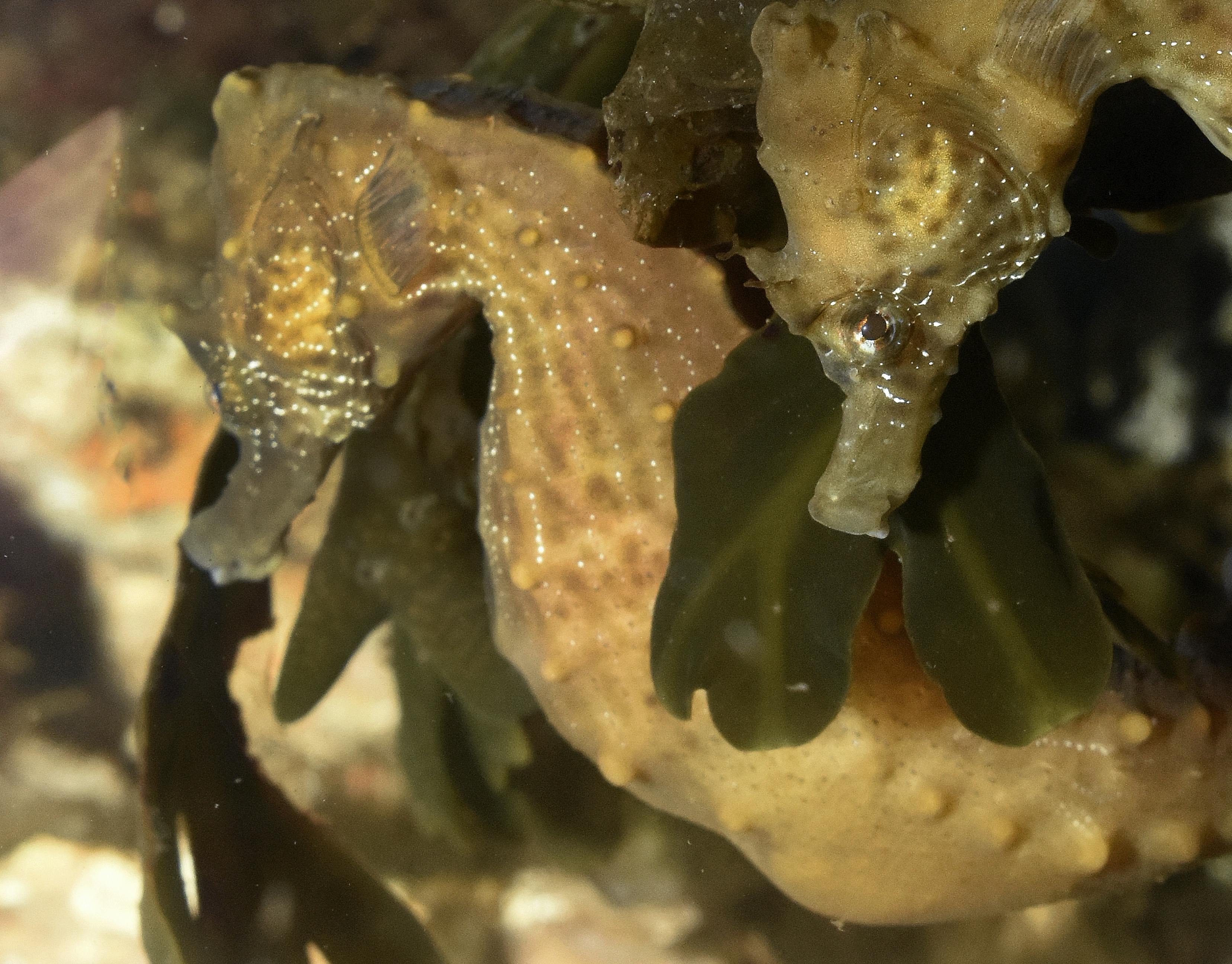
With their flexible tails, short-snouted seahorses cling tightly to stems of seaweed and seagrasses. Here, they are well hidden and safe from most predators. But when a heavy winter storm rages over the sea, the seahorses become detached and sometimes end up on the beach with hypothermia. Rotterdam Zoo helps these special fish by sheltering them and releasing them in warmer weather.
Hippocampus hippocampus

Up to 5 years
9 – 15 centimeters
Seahorses look very different from most fish. For example, they swim mostly upright and have smaller and less powerful fins. Instead, they have an agile tail, with which they can hold on tightly. Short-snouted seahorses have no teeth, but suck in small crustaceans with their tubular mouths. In addition, they can be recognized by two "horns" above the eyes.
Short-snouted seahorses are native to the Mediterranean Sea and the Atlantic Ocean off the coast of North Africa, Portugal, Spain and France. Nowadays we also see them increasingly around the British Isles, the North Sea and the Eastern and Western Scheldt. There, they live in shallow water, mostly in estuaries.

Reproduction in seahorses is slightly different than in most animals. The female lays her eggs in the male's brood pouch where he fertilizes them. So in seahorses, it is the male that becomes "pregnant," so to speak, not the female! After about 20 days, the brood pouch opens and the young seahorses float through the water column. Only after a few months do they have enough strength to be able to swim on their own. Juvenile seahorses are easy prey for predators. Only a few of them will grow up to be able to reproduce once again.

Climate change warms the sea water. For the short-snouted seahorses in the south of their habitat, off the African coast, it may therefore become too warm. Therefore, their habitat is shifting northward and we encounter them more and more often around the Dutch coast. But climate change has another consequence: storms are becoming more frequent. These storms drag the short-snouted seahorses with them and so they end up weakened on the beach. The combination of these factors may cause more and more seahorses to wash up on Dutch beaches.

Have you found a living seahorse on the beach? Then don't just throw it back into the sea. Strong currents cause weakened animals to wash up again. Put the seahorse in a bag or container of seawater and keep it as cold as possible. If you're in the Netherlands, call the Animal Ambulance or Rotterdam Zoo: (+31) 010 4431495, option 7. This way, you too can help the short-snouted seahorse.
Rotterdam Zoo shelters short-snouted seahorses in special aquariums behind the scenes. The water is just warm and saline enough for the short-snouted seahorses and they are given crustaceans to eat and seaweed to cling to and hide in. This way they regain their strength for the coming spring. Once the seawater has warmed up, a special diving team releases the seahorses back into the Eastern Scheldt.

